We recently interviewed Michael Larabel on how he uses Fedora. This is part of a series on the Fedora Magazine. The series profiles Fedora users and how they use Fedora to get things done. Contact us on the feedback form to express your interest in becoming a interviewee.
Who is Michael Larabel?
Michael Larabel is an entrepreneur, software engineer, and technology analyst. Larabel founded Phoronix Media in 2004. Phoronix is the leading destination for Linux hardware reviews and enthusiast-oriented Linux news. Michael also develops an automated open source benchmarking suite named the Phoronix Test Suite. The results from the suite are published on OpenBenchmarking.org.
Michael was also the lead developer involved in a startup that was building a home monitoring and communication device to help those with neurodegenerative conditions and the elderly. That startup stalled due to burdensome regulations in the US around commercial health related devices. The device leveraged Linux and Larabel hopes to bring the project back to life one day. “I hope one day to find the time to clean-up and improve the code as it could be an interesting open-source project.”
When not working on Phoronix or related projects, Larabel prefers to spend time working on home improvements or construction projects. He also enjoys organic gardening and German/Bavarian beers. The key for Michael’s hobbies is productive work, “I enjoy most anything as a hobby as long as I am engaging in some form of productive work rather than just watching TV or other leisurely activities.”
With his penchant for meaninful productive hobbies and an enjoyment of home improvements it was easy to understand Larabel’s choices for childhood heroes. “My childhood heroes would be Bob Vila and Steve Thomas from some good home improvement shows in the US.” Michael originally funded his purchase of computer equipment through construction work. “Many of my childhood years initially picking up building scraps on construction sites for the Habitat for Humanity non-profit before advancing to doing basic construction work to afford computer hardware.”
Michael started using Linux in 2002 with Mandrake Linux. He has “many great memories of former distributions like Yoper, MEPIS, KateOS, and many others.” The early difficulties of getting Linux up and running is what prompted him to start Phoronix.com.
The Fedora Community
Larabel has been covering Fedora on Phoronix since the Fedora Core days. At one point he was also a maintainer on the earlier ATI fglrx driver packaging for Fedora systems from the binary driver’s installer. Michael believe the Fedora community is “more technically focused than many other Linux/open-source communities. Less politics, more technical fun, and the right balance of involvement from Red Hat or any corporate overlord in relation to the project.”
Larabel would like to see the Fedora community adopt release code names again. He has fond memories of the code name Beefy Miracle. “That year at LinuxTag in Berlin the Fedora booth was giving out the ‘Beefy Miracle’ hot dogs, which was next to the openSUSE booth handing out their “openSUSE Old Toad” beer, making for good laughs and recharging while socializing with open-source contributors.”
Michael credits the Fedora project with shipping many technical advancements. These included AIGLX, virt-manager, an experimental Btrfs root install option. Most recently he cites Fedora as “being the first tier-one Linux distribution using Wayland by default.” Larabel believes that Fedora “is a great Linux distribution for any technical users / enthusiasts and while it’s not a rolling-release distribution its updates to packages like Mesa and the Linux kernel do make for a nice medium.”
What Hardware?
Larabel has over sixty systems running Linux. His main production system is running Fedora 25. “My main system is an MSI Cubibox with an Intel Core i5 Kabylake CPU, 8GB of memory, and Samsung SSD.” That system in paired with an ASUS 27 inch 4K display. His main keyboard is an Amazon Basics USB Keyboard. Despite costing just $10 USD Larabel has found them surprisingly durable. “The mice I use are generally from Razer, and while I would love for the company to provide native Linux support, at least there are third-party software options.”

When it comes to graphics cards Larabel’s recommendations depend on what users are looking for. “If you care about open-source drivers, definitely go for AMD. But if you want something that ‘just works’ and delivers the best possible performance and all of the advertised features, NVIDIA has proven themselves going back more than one decade.”

What Software?
Michael runs a mix of the latest stable release as well as Fedora Rawhide on several systems. “With my main system running Fedora 25, the programs I generally only ever use are Thunderbird, Firefox, Pidgin, GNOME Terminal, Gedit, LibreOffice, gFTP, and GIMP.” He also runs Git and the Phoronix Test Suite from the terminal. His production system is stock Fedora 25 with no extensions, plug-ins, or tweak tools.

From the GNOME Terminal, all of the usual GNU suspects, Git, and, of course, the Phoronix Test Suite. My main desktop is surprisingly close to a stock Fedora 25 experience with really not getting into any extensions / plug-ins / tweak tools.










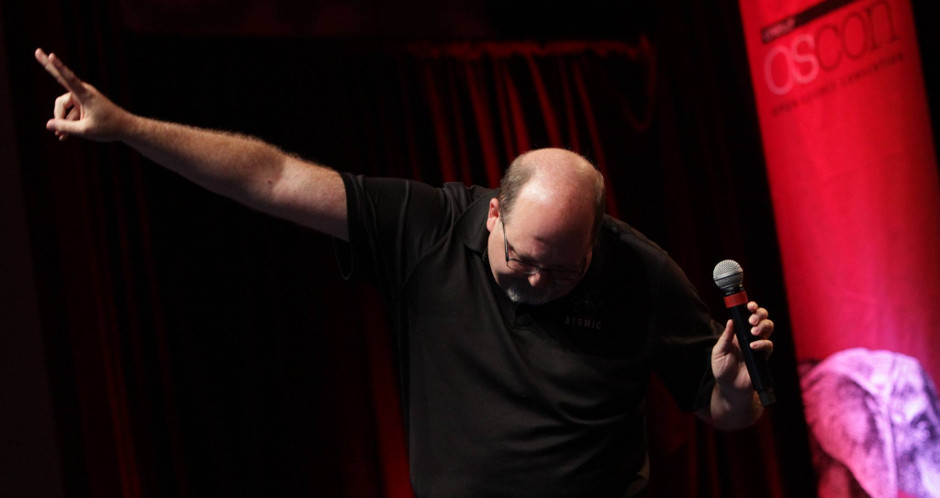










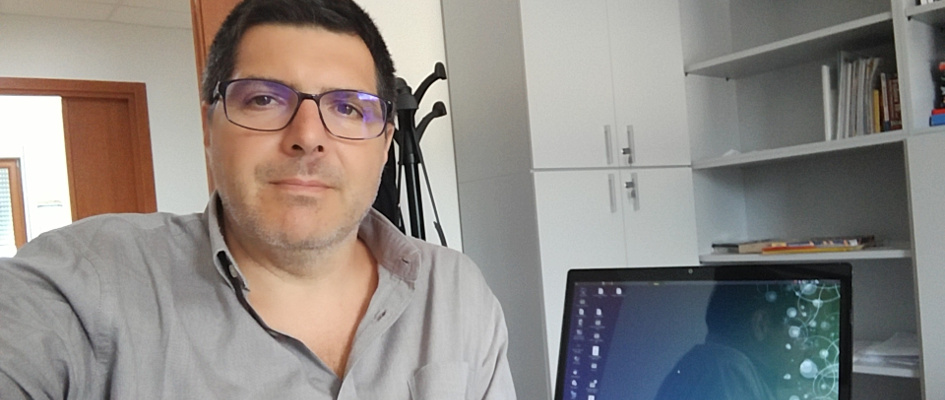




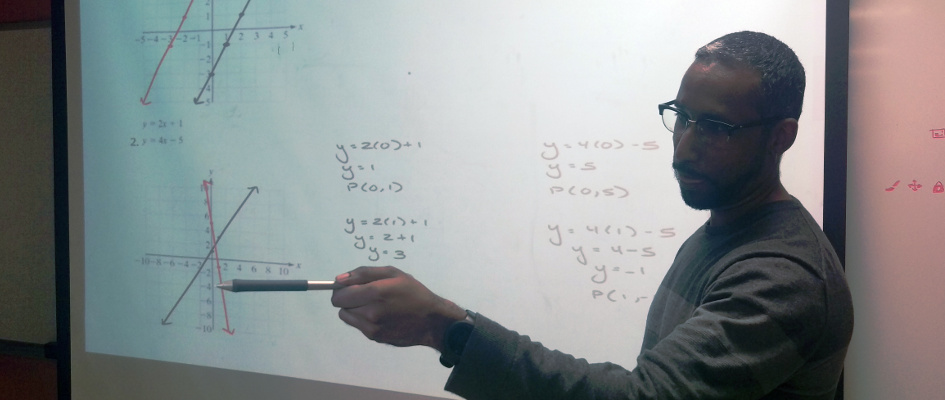





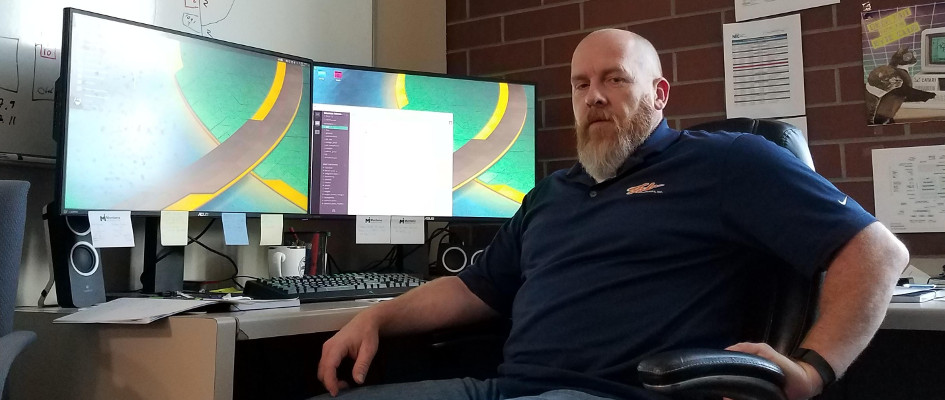





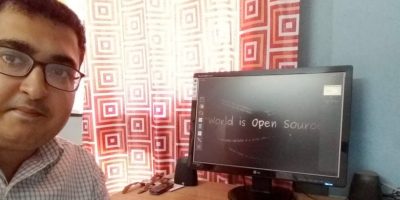




Akinsola
Thats lots of equipment you have, do you administer all those and do you host your own servers.
Eugene
God bless you, Michael, thank you for the Phoronix!
Michael Larabel
Thanks!
Michael Larabel
@Akinsola: All of the hardware is used for benchmarking / performance monitoring, they are not web servers. But they mostly manage themselves via Phoronix Test Suite’s Phoromatic.
Leslie Satenstein
ML, your setup is very impressive.
Given that large number of systems. Do you keep them all powered on, or are they in suspend/hibernate mode until needed.
And are you gradually replacing spinning disks for SSD’s in order to cut power consumption?
Michael Larabel
Leslie,
The Phoromatic component of the Phoronix Test Suite handles the test orchestration across the many systems. It has built-in support for powering on (WoL, etc) when needed and then turn off when there aren’t any benchmarks queued to run.
I think all but like 4 of the systems or so are on SSDs… They are more energy efficient but a heck of a lot faster. I just keep the few HDD systems around since they are older systems anyways and useful for occasionally looking at Linux HDD performance.
Scott
Thanks for all the work you do for the Linux community.
Fedora_23 Fanboy
I agree ML is a huge contributor to Linux software and hardware. Very happy to see him get covered here
Jose Bonilla
I stumbled on phoronix when researching btrfs raid. Keep up the great work.
Michael Larabel
Thanks!
Mogeni Elvis
Like the Phoronix website for its apt aid for newbies. Great work. Kudos!
Claude
“My main desktop is surprisingly close to a stock Fedora 25 experience with really not getting into any extensions / plug-ins / tweak tools.”
Really ?!
I didn’t think it was tolerable. I don’t know if I could ever use GNOME without any extension.
Paul W. Frields
@Claude: As we’ve seen in numerous polls, GNOME is the most popular desktop on Fedora. Many users use it productively with minimal changes. (I happen to be one of them — I use only the Caffeine and Pomodoro Timer extensions.) We encourage users to use whatever works best for them, and avoid bashing on other people’s choices. 😉
Michael Larabel
I happily use the GNOME ~3.20+ releases without relying upon any extensions. I think about the maximum extent of my GNOME tweaking has been to show icons on the desktop and in Nautilus to always show hidden folders.